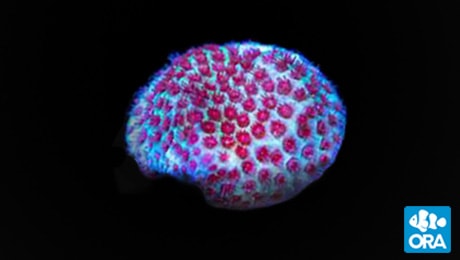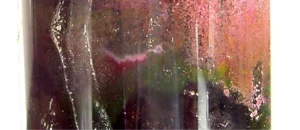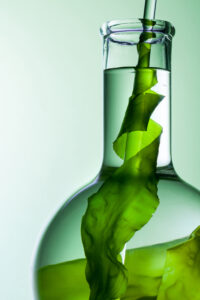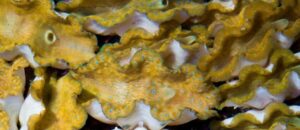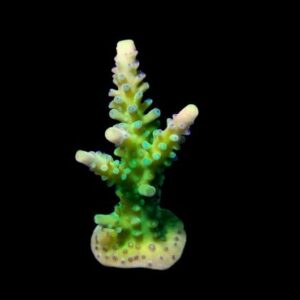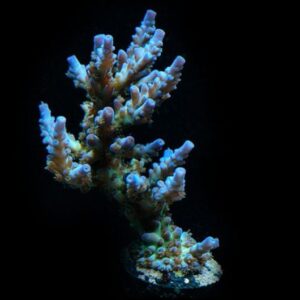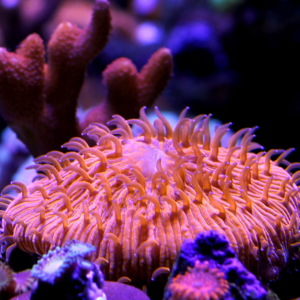Description
Porites corals are found in several reefs around the world. They can be found in the Indo-Pacific, the hot spot for most corals, but they can also be found in the Caribbean. On the other hand, the frags sold here are aquacultured by ORA. These corals are grown in aquariums and then fragged to be sold to hobbyists such as yourself. Aquacultured corals have benefits that will be discussed below.
Porites are very common in the ocean but are uncommon in the aquarium hobby. This is purely because of lack of collection. The Purple Sand Dollar Porites has a mostly purple coloration with polyps that can appear almost red under certain lighting. In the wild they have a similar appearance to pocillopora, but appear different in aquariums due to retracted polyps. Seeing lots of space in between the polyps is normal. Porites are easy to care for, but there are some basic things you should know. These are high flow, high light corals. Porites come from some of the shallowest water on the reef and the most turbulent water. It is nearly impossible to give this coral too much flow with the equipment available in the hobby. Flow is important to avoid detritus from settling on the coral. It also provides the coral with needed nutrients and elements. Make sure this coral is placed in the most turbulent part of your aquariums. It is ideal to provide irregular, random flow to avoid dead spots and promote proper growth. Because they naturally live in shallow water, these corals need high light. It is possible that these coral receive over 1,000 micromoles of PAR in the ocean. However, providing 200 micromoles of PAR is plenty for this coral, which is pretty standard for SPS corals.
What about feeding? This isn’t a coral you should go out of your way to feed. It contains a photosynthetic algae called zooxanthellae which provides the coral with most of its nutritional needs. For this reason, and because it has tiny polyps that don’t have a strong feeding response, feeding this coral is fairly pointless. However, dosing your aquarium with phytoplankton and amino acids can benefit the coral. You should aim to keep your water chemistry as stable as possible. Keep your calcium, alkalinity, and magnesium at a good level and stable. This coral can handle more fluctuations than some other SPS corals, but you should aim for as little fluctuation as possible. Keep your temperature at 72-78 degrees Fahrenheit and stable. Your nitrates should be 1-5 ppm and your phosphates should be just barely detectable. This will ensure there are enough nutrients to keep your corals happy and healthy without lots of algae growth.
Care requirements
Purchase Size: 1 – 2″
Placement: Middle to top.
Lighting: Medium to high
Flow: Strong
Parameters: 72-78° F, dKH 8-12, pH 8.1-8.4, salinity 32-35 ppt
Calcium: 350-450 ppm
Alkalinity: 8-12 dKH
Magnesium: 1,250-1,350 ppm
More Information
Because this coral is aquacultured by ORA, it is better adapted to aquarium life than corals collected from the ocean. It is accustomed to aquarium lighting, flow, and water chemistry. Aquacultured corals are more likely to survive and do well in your aquarium. They are also far less likely to carry pests and disease, though you should still dip and/or quarantine them to be safe. On top of all that, they are more sustainable and environmentally friendly.

